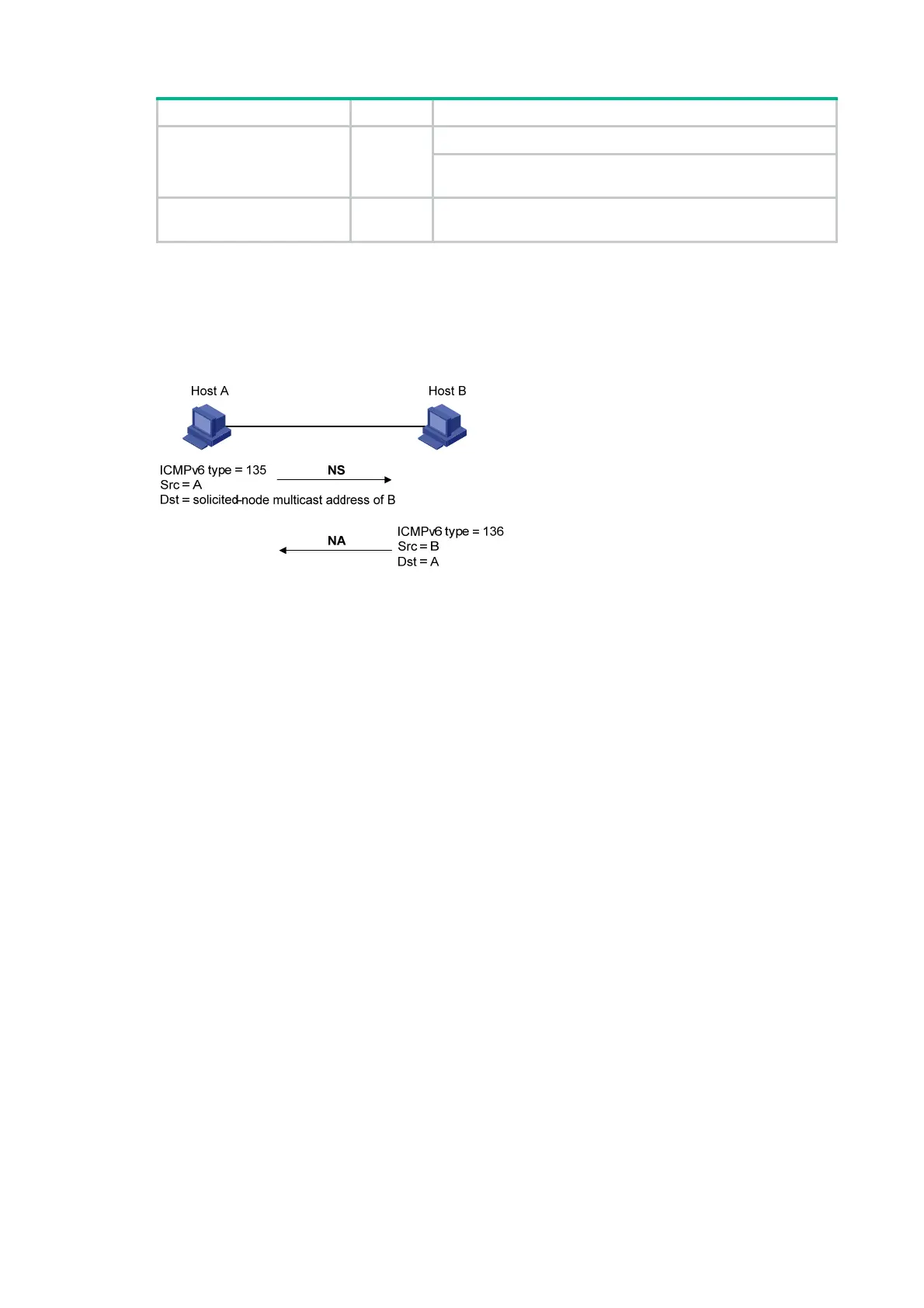228
ICMPv6 message Type Function
Router Advertisement (RA) 134
Responds to an RS message.
Advertises information, such as the Prefix Information options
and flag bits.
Redirect 137
Informs the source host of a better next hop on the path to a
particular destination when certain conditions are met.
Address resolution
This function is similar to ARP in IPv4. An IPv6 node acquires the link-layer addresses of neighboring
nodes on the same link through NS and NA messages. Figure 85
shows how Host A acquires the
link-layer address of Host B on the same link.
Figure 85 Address resolution
The address resolution procedure is as follows:
1. Host A multicasts an NS message. The source address of the NS message is the IPv6 address
of the sending interface of Host A. The destination address is the solicited-node multicast
address of Host B. The NS message body contains the link-layer address of Host A and the
target IPv6 address.
2. After receiving the NS message, Host B determines whether the target address of the packet is
its IPv6 address. If it is, Host B learns the link-layer address of Host A, and then unicasts an NA
message containing its link-layer address.
3. Host A acquires the link-layer address of Host B from the NA message.
Neighbor reachability detection
After Host A acquires the link-layer address of its neighbor Host B, Host A can use NS and NA
messages to test reachability of Host B as follows:
1. Host A sends an NS message whose destination address is the IPv6 address of Host B.
2. If Host A receives an NA message from Host B, Host A decides that Host B is reachable.
Otherwise, Host B is unreachable.
Duplicate address detection
After Host A acquires an IPv6 address, it performs Duplicate Address Detection (DAD) to check
whether the address is being used by any other node. This is similar to gratuitous ARP in IPv4. DAD
is accomplished through NS and NA messages.
